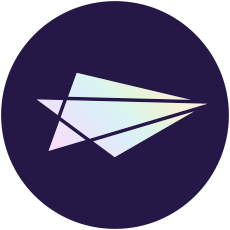#Innovidual Kevin Reelfs
We’re a company full of innovative individuals, or as we call them, #innoviduals. This recurring series highlights some of our best and brightest employees by sharing their unique wisdom and technical know-how.
Our latest #innovidual is Kevin Reelfs, Program Integration and Strategy Lead. He has a vast amount of experience throughout his career, including helpdesk support, system administration, system engineering, automation scripting, and management at both the team and program levels. Kevin joined Leidos via the Lockheed Martin acquisition in 2015, moved over to JPL in 2017, and returned to Leidos in 2021.
Tell us a little about your job and the responsibilities that come with it.
In my current role, I work with multiple teams across various areas to help find innovative ways to solve issues, both internally and for our customers. I always meet with the people involved to truly understand the issue and get to the root of the problem. For example, I work with the team that developed NASA End-User Services and Technologies, otherwise known as NEST. NEST supports NASA's enterprise IT and simply put, our goal is to make IT disappear into the background, whether it be upgrades, more significant security issues, or a better way to integrate our program across all levels.
Why is innovation important in your role?
Innovation is key to my career—finding ways to solve our customer’s problems—from the desktop to servers or even more extensive program-level problems—I work closely with my customers to make them productive IT users while letting the IT systems’ management and troubleshooting fade into the background.
I find the key to properly innovate for customers is understanding their challenges and objectives, creating a partnership that allows for the most productive environment. It’s also important to encourage all teams to think outside the box, alleviate roadblocks, and introduce new technology trends. During my first couple of years at JPL, Apple® launched the iPhone®, a closely monitored consumer technology trend that would change the communication device business. This innovation took over from the much-loved BlackBerry. It improved communication and performed tasks at the ease of the user's fingertips, freeing up valuable time. A powerful example of how small changes allow IT systems to simply disappear into the background.
Technology trends are continually evolving and two of the most significant areas of focus at the moment is data and security. We create more and more data every day, so how do we manage this securely, and find better ways to utilize it.
Working with NASA throughout my career, I learned it's important to be able to securely store all previous missions data, all of the calculations to go to another planet, to go into orbit, and leave the solar system, while also ensuring it’s easily accessible and can be used and built upon for the future missions. There will also be some data that NASA will want to make available to the world, such as ocean temperatures or soil moisture data, so there can be a collaborative approach to global environmental issues, such as researching climate change or improving agriculture in third-world countries.
What does innovation mean to you?
Innovation to me is not necessarily creating something that has never existed. Innovation can also be finding new ways to use the tools and processes you already have to become more effective and productive, not necessarily to be the best creators of IT, but the best users of IT.
For example, to engage with the public more, we could develop an app that allows users to point their phone into the air and get a view of the next spacecraft. This isn’t creating new technology—people have been using augmented reality for some time now. We are simply finding new innovative ways of applying it.
Are there any innovations or individuals that inspire you in your work? Who or what?
Walt Disney has always been an inspiration to me. It may seem strange to discuss someone who created cartoons as an inspiration in IT, but if you think that, you don’t really know Walt Disney. He and his “imagineers” invented many new techniques and innovations in the entertainment industry, including the multiplane camera (to allow for greater depth in cartoons) and audio-animatronics (combining audio sounds with robotic movements for a “life-like” experience). Even something as simple as the covered trash can with a swinging lid to hide trash from view at Disneyland® was created by Disney's team.
I’ve always been intrigued by Disney’s idea of “plussing”, finding a way to continually make something better. He would push his team to be more creative, inventive, and think outside the box to “plus” whatever they were developing. This was key to his creation of Disneyland®, having a place to continually add to, or in his words, “The park means a lot to me in that it's something that will never be finished. Something that I can keep developing, keep plussing and adding to—it's alive. It will be a living, breathing thing that will always need changes.”



